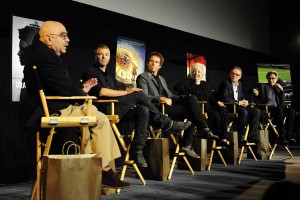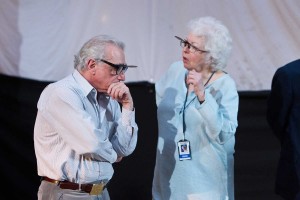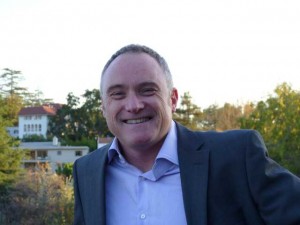
For aspiring editors and pros alike, the panel was an insightful introduction to careers in editing and the collaborative process between editors and directors. Heim began, “We know that we all sit in dark places… and we try to tell wonderful stories.” He then asked his usual question of the panelists on how they came to film editing – paths which always turn out to be as varied as the films that brought the editors their nominations.
Tellefsen worked as an apprentice editor for Schoonmaker on Color of Money. He originally was an art student, but he explained. “I always had a mad passion for movies. Back then there were no DVDs or online movies. You had to go to the theater. I lived in the art houses in New York City.” He took an experimental film class and started doing little films, experimenting at butting two images together and creating in context. “It was like a shot in the arm that never stopped,” he says. “I knew I had a facility for it.” When he got his first feature, Metropolitan, he says, “I learned my facility for narrative.”
Tent went to L.A. City Film School on Vermont Avenue and made short films. After a classmate suggested he cut out a section of the film, he couldn’t believe what a difference it made. “I was so impressed with that,” he says, “I think editing found me, because I didn’t plan on becoming an editor at that point. I was just doing it because I liked doing it.” Tent’s first big break was when he was hired to recut Emmanuel V for iconic low-budget filmmaker Roger Corman. Because he did that cut, another director hired him to cut his film. “Roger’s was a great place to be an editor,” Tent continues. “It was kind of a free-for-all. It was so free – our movie was really short – we stole a scene from another movie. No one will ever know. I wound up doing that a lot down there.” He alternated between low-budget “Roger movies” and small indie and art films until he was hired to cut Citizen Ruth for Alexander Payne.

Both Baxter and Wall started at commercial production houses and gravitated towards editing. An Australian, Baxter first delivered tea. Wall was the vault guy. Baxter is self-taught and likes the “adrenaline of editing.” Wall was “obsessed with watching films from the time he was a kid” When he discovered editing, he reveals, “I found the thing I could do 24 hours a day.” While working at Propaganda Films they met David Fincher who was one of the hot commercial directors at the time. They began working on commercials with the director, developing a working relationship that carried over to the Fincher’s feature films.
One thing the editors have in common is that they have all worked with the same director several times. It is often said that a continuing relationship between a director and editor is like a good marriage. The panelists confirmed what makes their specific collaborations so powerful over time.
Talking about Fincher, Baxter shares, “For me, he’s such a fascinating director to work with. I could gush for a long time describing him. He really is an expert at what he does. To be involved in it with him is an honor and a great challenge.” Wall says, “I also think that there’s a shorthand that starts to develop. I’ve watched him work and evolve in leaps and strides as a director. It’s interesting because I feel like I’ve evolved as a result of the relationship. It helps because you don’t have to go through the introductory lessons that you learn when you first start working together.”

Schoonmaker agrees that there is a shorthand when you have worked with the same director for a while. Scorsese has said that he would like to wear a recorder on set to capture the 500 or so questions that are asked of him on the first day of shooting. Everything from “Do you take milk in your coffee?” to “How do you want the curtains hung?” She also believes that it is generally important for the editor to edit the film as the director “originally conceived of it.” There is a time and place to show alternative cuts, but it is best to wait until the director is ready to see another version. She adds that Scorsese “is never wrong.”
Tent agreed with Wall about the trust that is established in the editing room saying of Payne, “He believes in and trusts his people.” Unlike Fincher and Scorsese, who have very specific visual visions for their films, Tent relays that Payne thinks in broad strokes and is not super specific. He likes to have the film organically shape up in postproduction. “No idea is too stupid to throw out,” shares Tent. “You never know what idea is going to spring some other idea that is going to lead somewhere else.”
Tellefsen established his relationship with Bennet Miller on Capote. They developed an understanding of where they wanted to go, “a sense of discovery, finding a way within the shape of a film to find that gut punch that happens within.” He admits that the difficulty for many editors in establishing a long-term working relationship with a director is that not every director has movies on a consistent basis. Often an editor has to work with other directors between projects.
After viewing clips of the various Oscar-nominated films, the editors commented on some of the specific processes they employed in editing the screened sequences. It was apparent that even with the differences between their careers, directors and films, some of the most talented filmmakers in the world, were sharing their secrets of success.





